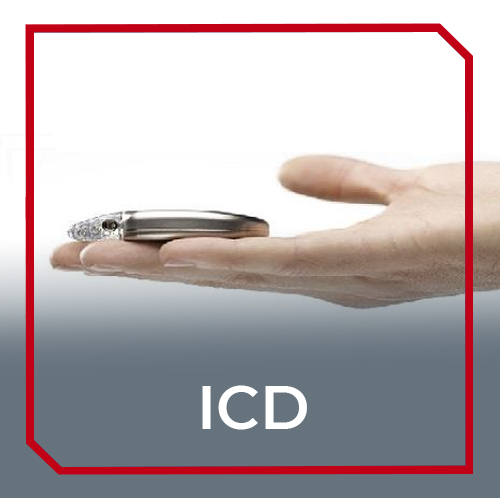What is an ICD?

What is an ICD?
An ICD (implantable cardioverter defibrillator) is a small device that is implanted underneath the skin to help keep track of- and control your heartbeat. The difference with a pacemaker is that an ICD can intervene in case of a life threatening heart rhythm abnormality. The ICD consists of a small box and one or two wires. In the metal box there is a small chip and a battery that powers the device and has a life span of many years.
When will you receive an ICD?
- In case of a life threatening heart rhythm disorder such as ventricular tachycardia or ventricular fibrillation.
- When you have a high risk of a heart rhythm disorder or cardiac arrest.
- When medicines for your heart rhythm disorder don’t work or surgery isn’t possible.
Placement
During surgery a small incision, approximately 5 cm or 2 inches long, is made on your chest underneath your collarbone. In general the device is placed under your left collarbone, but a surgeon might choose to place it under your right collarbone or elsewehere. The pacemaker is implanted at this location underneath the skin and the wires are led through a vein to the heart. Small electric pulses, that you won’t be able to feel, are sent through the wire to your heart when needed.
CRT-D
Like an ICD, a CRT-defibrillator is designed to intervene in case of a life threatening heart rhythm abnormality. Other than a normal ICD, a CRT-D has three wires instead of one or two and sends small electric pulses to your left and right ventricles to help your heart pump more efficiently.
Read more:
What is the difference between a pacemaker and an ICD?
Vital Beat offers special protection wear for you and your device. You can read more about these products by clicking the button below.
